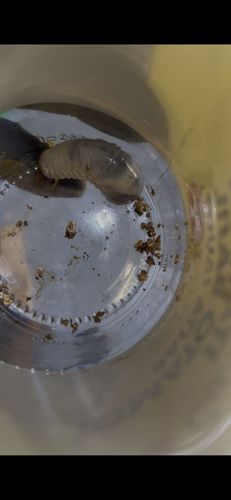Grub (Beetle larva)
Scientific Name: Various species depending on the adult beetle, e.g., Phyllophaga spp. (May beetles/June bugs), Popillia japonica (Japanese beetle), Cyclocephala spp. (masked chafers), among others. It's difficult to identify the exact species from the larval stage alone.
Order & Family: Order: Coleoptera (beetles); Family: Scarabaeidae (scarab beetles) is a common one, but may also include larvae from other beetle families like Curculionidae (weevils).
Size: Typically 0.5 to 1.5 inches (1.2 to 3.8 cm) in length, but can vary greatly depending on the species, from less than half an inch to several inches for larger beetle larvae.

Natural Habitat
Found in soil, compost piles, under decaying logs, or in turf and garden beds where they feed on roots.
Diet & Feeding
Primarily feed on decaying organic matter, roots of grasses, plants, and sometimes crop roots. Some species are predatory.
Behavior Patterns
Larvae develop underground, often feeding on roots for one to several years depending on the species. They are slow-moving and typically curl into a C-shape when disturbed. Adults emerge from the soil.
Risks & Benefits
Risks: Many species are considered pests in agriculture and horticulture, as they can cause significant damage to lawns, crops, and ornamental plants by feeding on roots. Benefits: Some grubs assist in decomposition and nutrient cycling in the soil.
Identified on: 9/1/2025